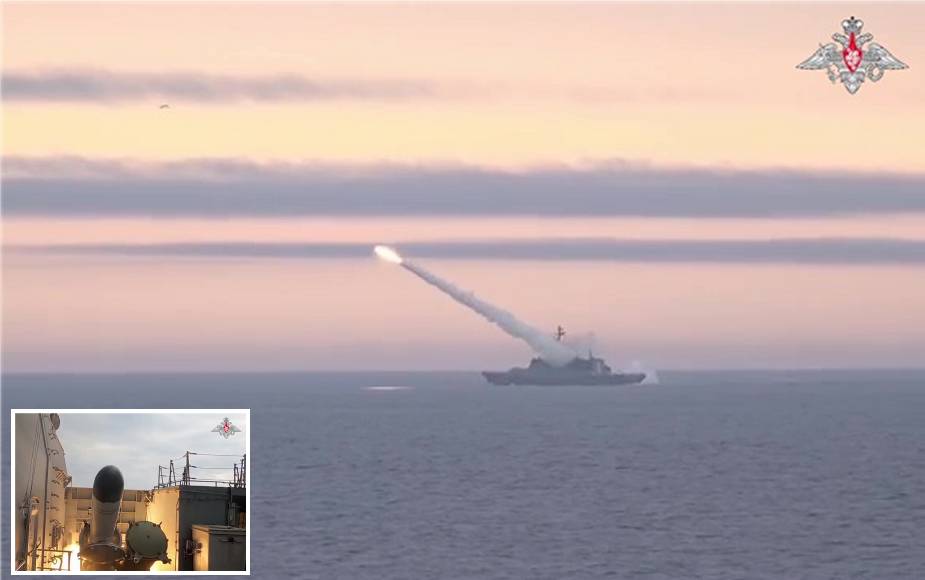Breaking news
Russian Navy Steregushchiy-class corvette successfully test-launches Kh-35 Uran cruise missile.
The Russian Navy's Pacific Fleet announced on June 22, 2023, that one of its cutting-edge corvettes of the Steregushchiy class has successfully conducted a series of sea trials, including a successful launch of the "Uran" anti-ship cruise missile. The Ministry of Defense issued an official statement highlighting this achievement.
Follow Navy Recognition on Google News at this link
 Russian navy Steregushchiy class corvette has successfully conducted live firing with "Uran" KH-35 anti-ship missile. (Picture source Russian MoD)
Russian navy Steregushchiy class corvette has successfully conducted live firing with "Uran" KH-35 anti-ship missile. (Picture source Russian MoD)
During the exercise, the Steregushchiy-class corvette launched the "Uran" missile, successfully hitting a designated maritime target in the Sea of Japan. The missile precisely struck its intended target, a naval shield positioned over 30 kilometers away. In recent years, the Russian Navy has been attempting to strengthen its presence in the Pacific Ocean, particularly in terms of submarines and surface ships.
The "Uran" missile (KH-35) is a versatile air-to-surface, surface-to-surface, and anti-ship cruise missile. Originally developed in the Soviet Union, it entered service in 2003 and is currently used by the Russian Navy, Indian Navy, and Vietnamese People's Navy. With a unit cost of $500,000, the missile has a mass of 520 kg (air version) or 610 kg (surface and helicopter version), with lengths of 385 cm (air version) or 440 cm (surface and helicopter version). It has a diameter of 42.0 cm and a wingspan of 133 cm. The warhead is a 145 kg high-explosive fragmentation shaped charge. The missile is powered by an R95TP-300 turbofan engine with a thrust of 360 kgf.
The Uran missile has an operational range of 130 km (70 nautical miles), and an upgraded version introduced in 2015 has a range of 300 km (160 nautical miles). The Uran operates at an altitude of 10-15 m during the midcourse phase and approximately 4 m in the terminal phase. With a maximum speed ranging from Mach 0.8 to Mach 0.85 (609-647 mph or 980-1,041 km/h), the missile utilizes inertial guidance and an X-band ARGS-35E active radar homing system for precise targeting.
The guided missile corvettes of the Steregushchiy class, also known as Project 20380, are a versatile addition to the Russian Navy's fleet. With a displacement of 1,800 tons (2,200 tons at full load) and a length of 104.5 meters, these corvettes are powered by four Kolomna 16D49 diesel engines, reaching a speed of 27 knots. They are equipped with advanced sensor systems, including air and surface search radars, and feature a diverse armament, such as 100 mm or 130 mm naval guns, anti-ship missiles, torpedoes, and CIWS systems. The Steregushchiy class also includes hangars for helicopters and launch pads for UAVs.
The missile firing exercise was carefully coordinated, with the Pacific Fleet deploying a series of ships and boats to secure the designated area. Additionally, maritime aviation aircraft provided aerial support to ensure the smooth conduct of the test.
With this test launch of the "Uran" missile from the corvette, Russia makes significant progress in the development of its fleet and its presence in the Pacific Ocean.




























